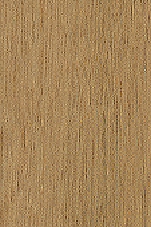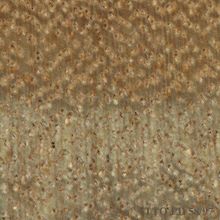
MEDANG (Nothaphoebe malabonga)
Trade Name
Medang
Scientific Name
Nothaphoebe malabonga (Blanco) Merr.
Family
LAURACEAE
Common Names
Malaya (Philippines); Kabulo (Philippines); Malabunga (Philippines)
Scientific Name Synonyms
Alsodaphne malabonga (Blanco) Kosterm; Aiouea malabonga Blanco
Description Of The Tree
Botanical Description
It is an evergreen, small to medium-sized tree up to 30 m tall. The bole is often straight and cylindrical, branchless for up to 21 m, up to 70 cm in diameter, without or with small buttresses.
Natural Habitat
Nothaphoebe is reported in primary evergreen lowland to lower montane rain forest, up to 1,200 m of altitude.
Non Timber Uses
The bark contains the poisonous alkaloid laurotetanine.
Wood Identification
Anatomic Description Of Wood
Wood diffuse porous. Occasionally vessels in diagonal and/or radial pattern. Tyloses common. Vessels per mm2 5 to 20. Vessel-ray pits reticulate and/or foraminate. Simple perforation plates. Intervessel pits medium, 7 to 10 micras. Intervessel pits large, 10 mic Paratracheal axial parenchyma scanty and/or vasicentric. Occasionally axial parenchyma aliform. 3 to 4 cells per parenchyma strand. 5 to 8 cells per parenchyma strand. 4 to 10 rays per mm (medium). Oil and/or mucilage cells associated with the axial and/or ray parenchyma (idioblasts). Body ray cells procumbent with mostly 2 to 4 rows of upright and/or square marginal cells (Kribs-II). Body ray cells procumbent with one row Septate fibers present. Fibers very thin walled. Fibers with simple to minutely bordered pits.
-
 Wood Macro Photo Tangential Plane
Wood Macro Photo Tangential Plane
-
 Wood Micro Photo Of Transversal Section
Wood Micro Photo Of Transversal Section
Availability
Cites Status
Unrestricted
General Wood Description
Odor
It has faint pungent odor.
Color
The heartwood is pale olive-brown, darkening on exposure, moderately sharply differentiated from the pale yellow-green or gray-green sapwood.
COLOR INDEX (1=Black, 7=Light yellow,white)
2
Grain
The grain is interlocked, sometimes straight.
Texture
Texture is reported to be moderately fine and even.
Luster
Timber of this species is rather lustrous.
Natural Durability
It is durable for interior work, but non-durable when exposed to the weather or in contact with the ground.
Natural durability index (1= Very high durability, 7=Vey low durability)
6
Resistance To Impregnation
The heartwood is reported to be resistant to preservative treatment, but the sapwood is readily treatable.
Wood Physical Properties
Basic Density or Specific Gravity (O.D. weight/vol. green) (g/cm³)
0.46
Air-dry Density (Weight and volume at 12%MC) (g/cm³)
0.50
Total shrinkage Tangential (Saturated to 0%MC) (%)
3.6
Total shrinkage Radial (Saturated to 0%MC) (%)
1.8
Drying Defects
Ease of Drying: Air seasoning is reported to be easy and good. Drying Defects: End-splitting and surface checking may occur.
Dimensional stability ratio (Total Tangential Shrinkage %/Total Radial Shrinkage %)
2.0
Wood Chemical Properties
Wood Mechanical Properties
Workability
Rotary Veneer Cutting
This species can be used for lamination.
Sliced Veneer
This species can be used for lamination.
Machining
This species is easy to machine.
REFERENCED USES
End Uses Summary
HOUSING GENERAL, FURNITURE AND CABINETS, PLYWOOD AND VENEER, OTHER AND MUSICAL INSTRUMENTS, handicrafts
General Housing
- 10 - Silica in Timbers
Furniture Cabinets
- 21 - Tropical timbers of the world. Part III-Southeast Asian and Oceanian Species.
Panels, Veneers
- 25 - Directory of Timber Trade Malaysia
Handcraft
- 66 - Maderas latinoamericanas. VII. Caracteristicas anatomicas. propiedades fisicomecanicas, de secado, y tratabilidad de la madera juvenil de Cordia alliodora (Ruiz & Pav. Oken.)
Please Provide Information To View Producer Information